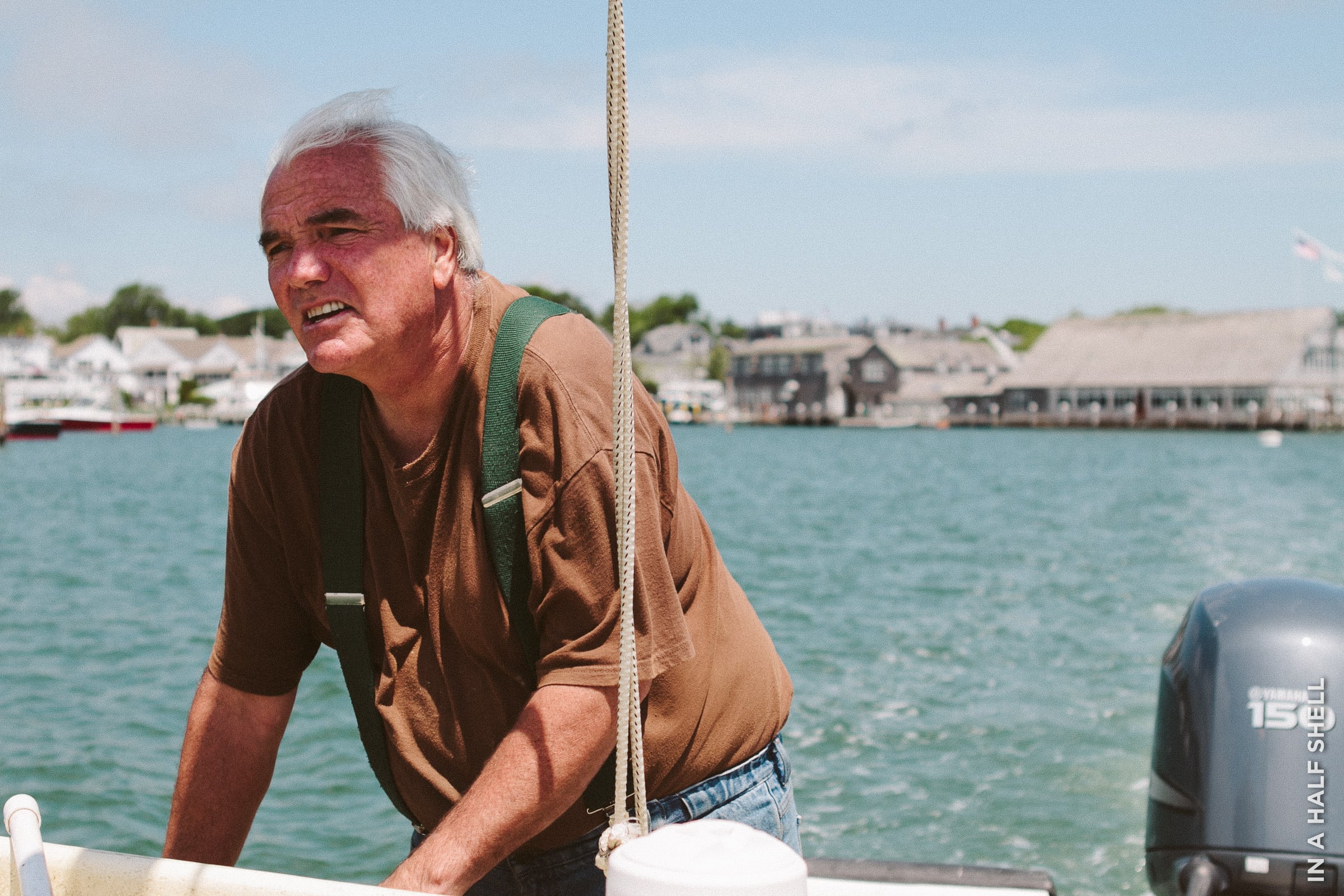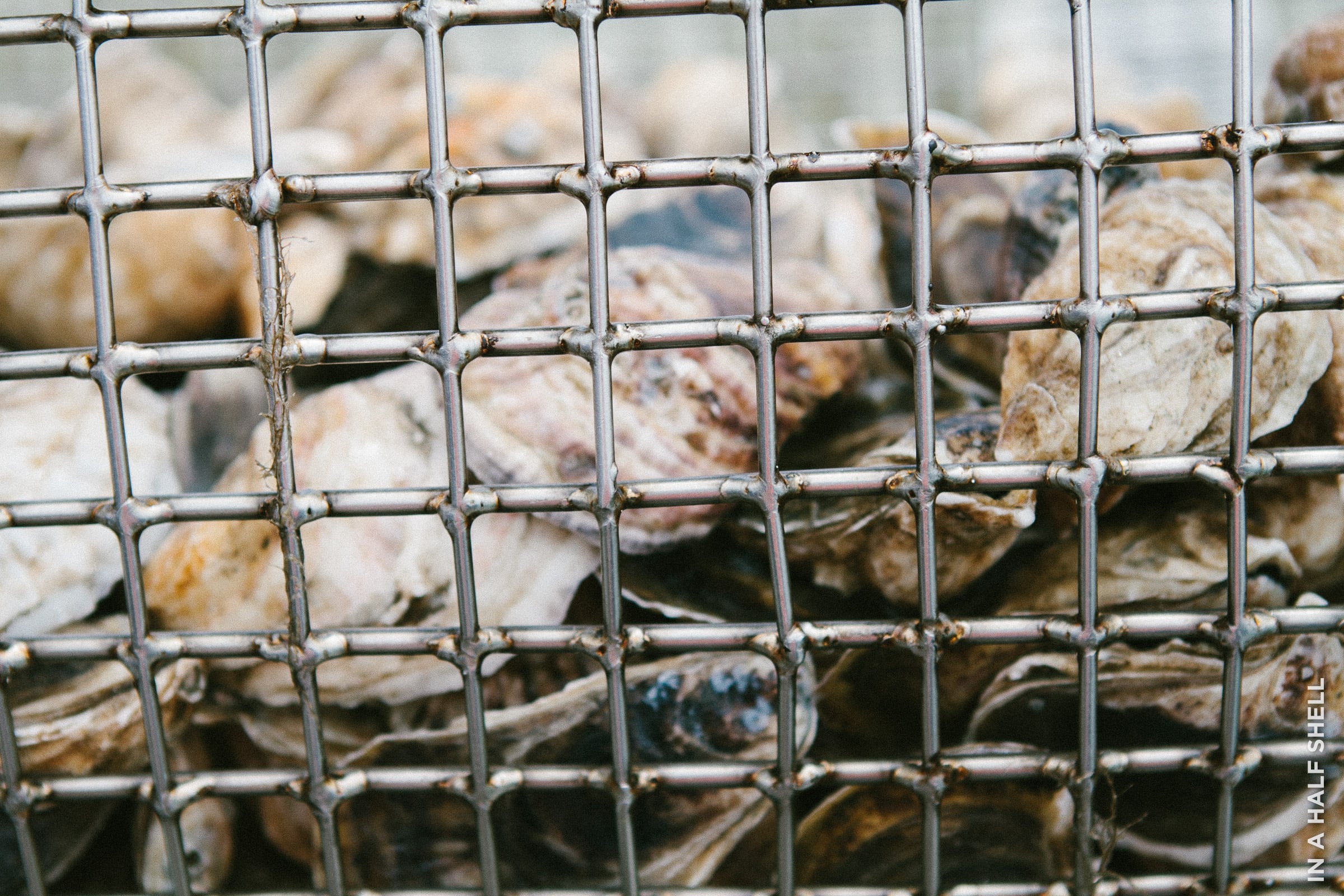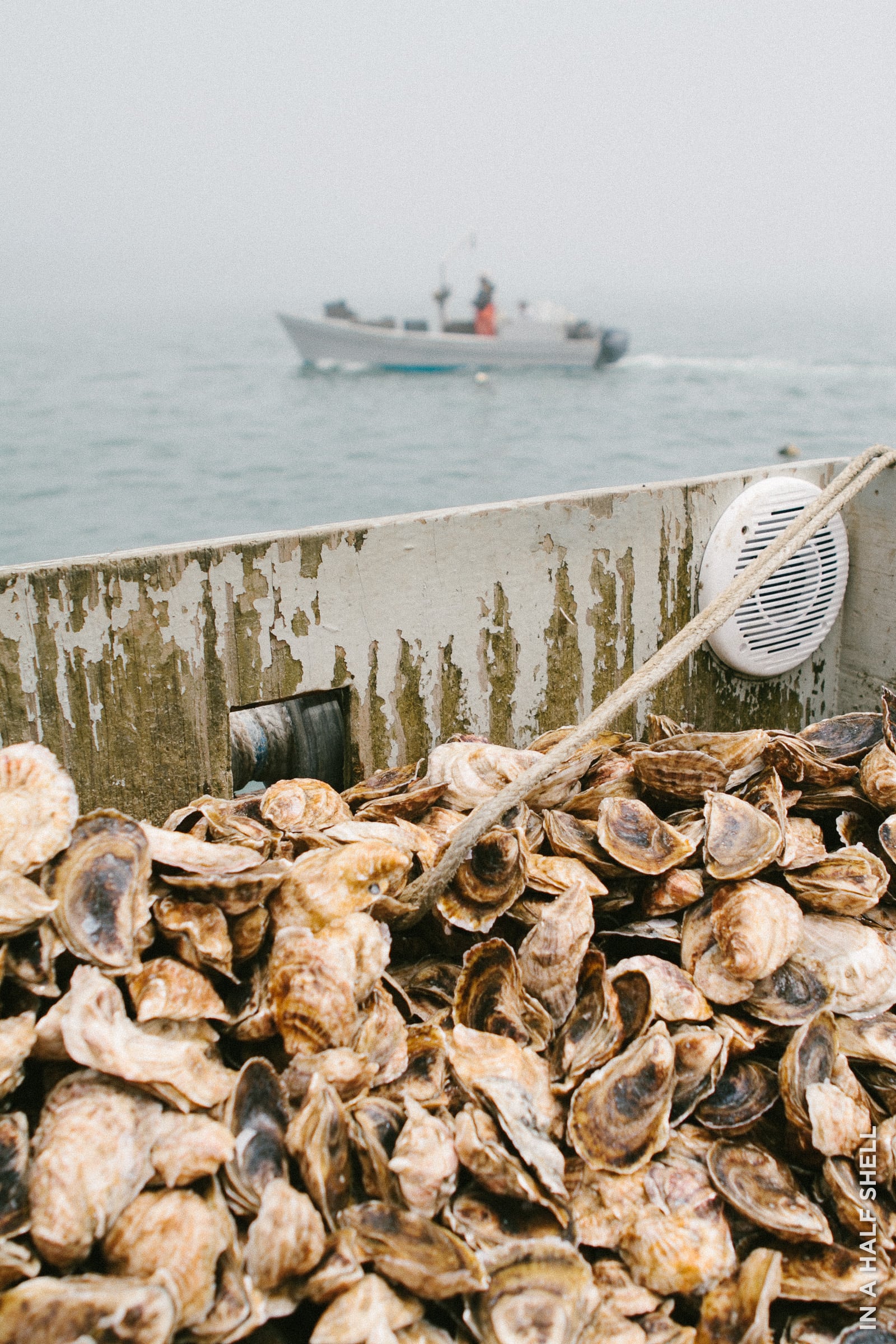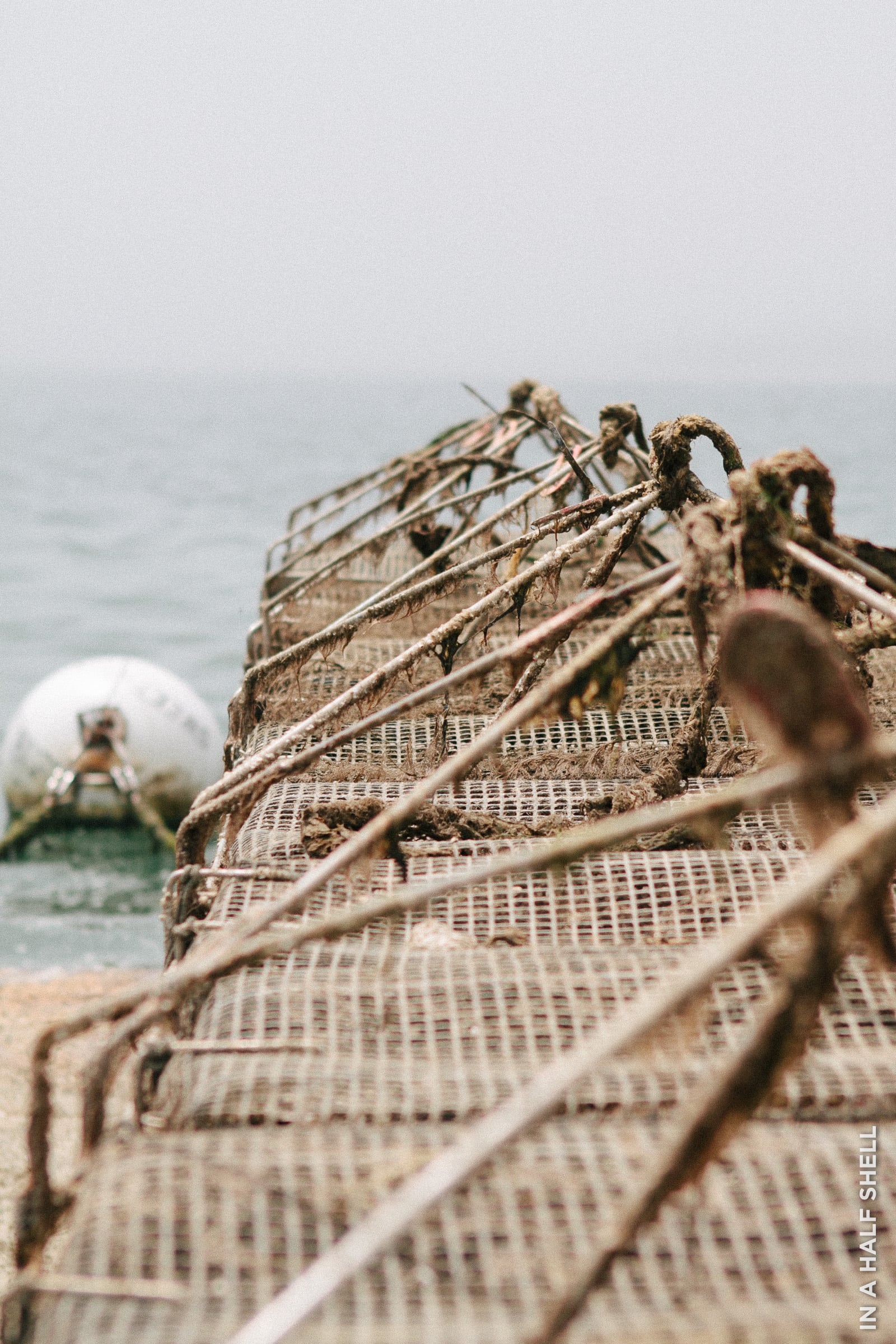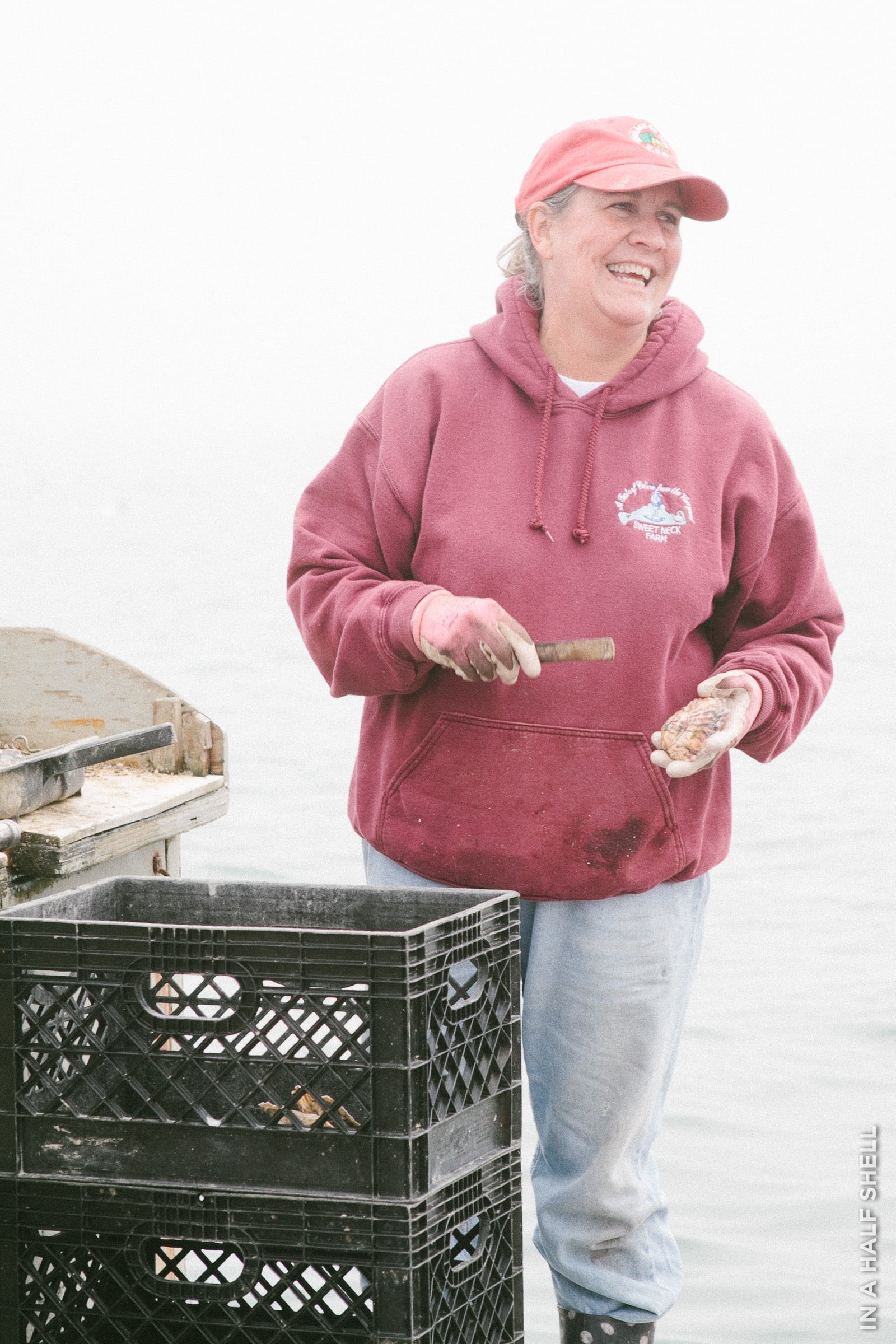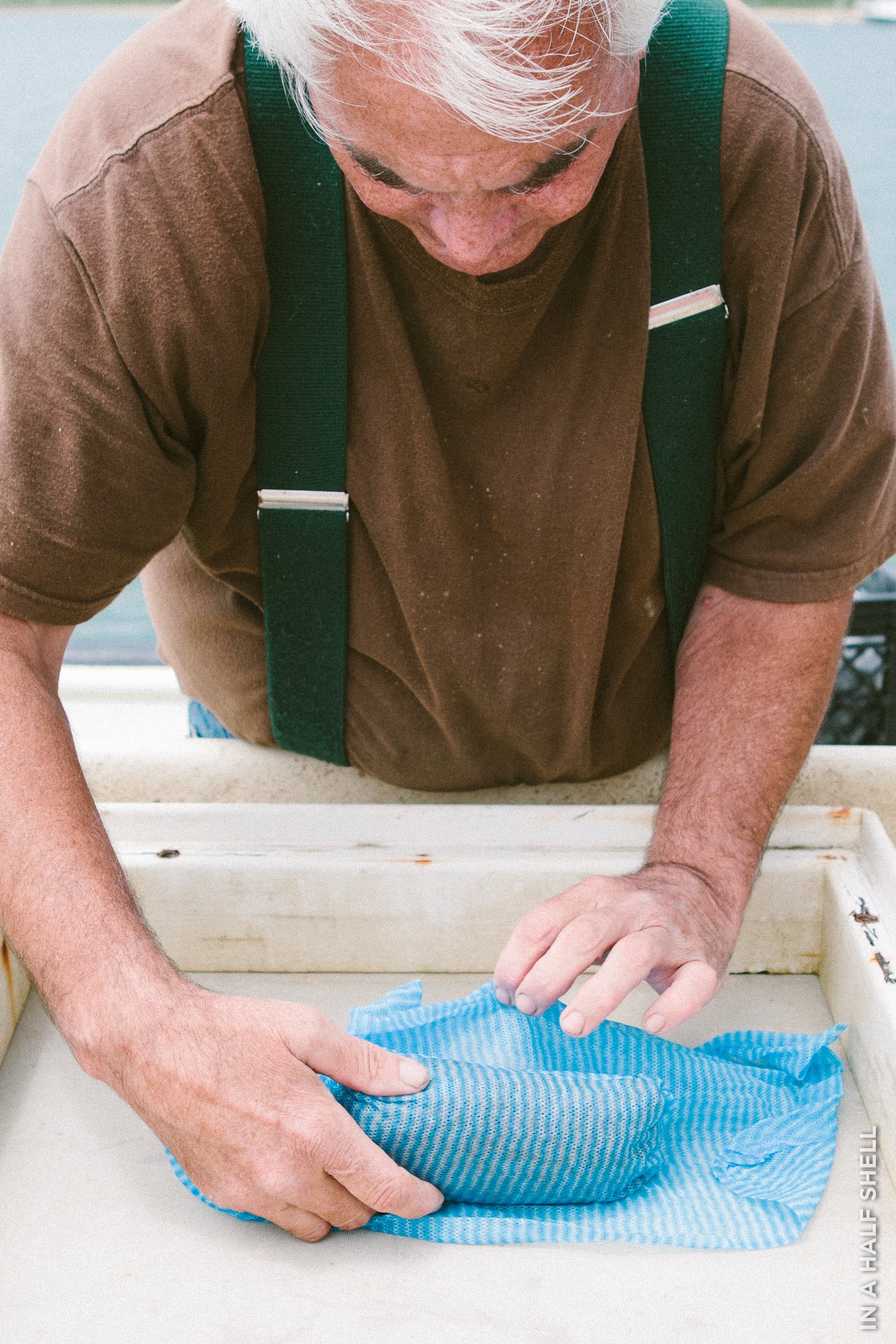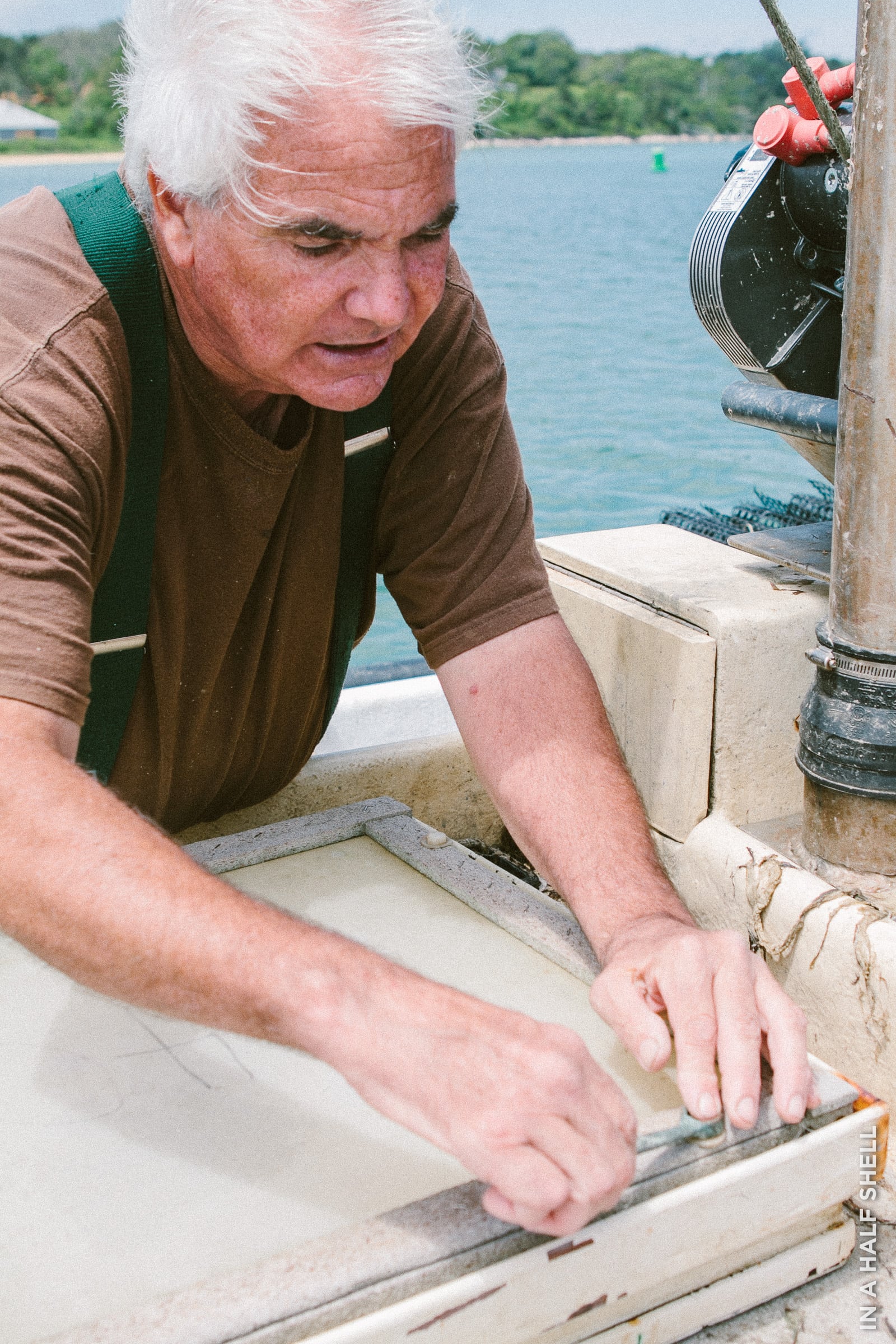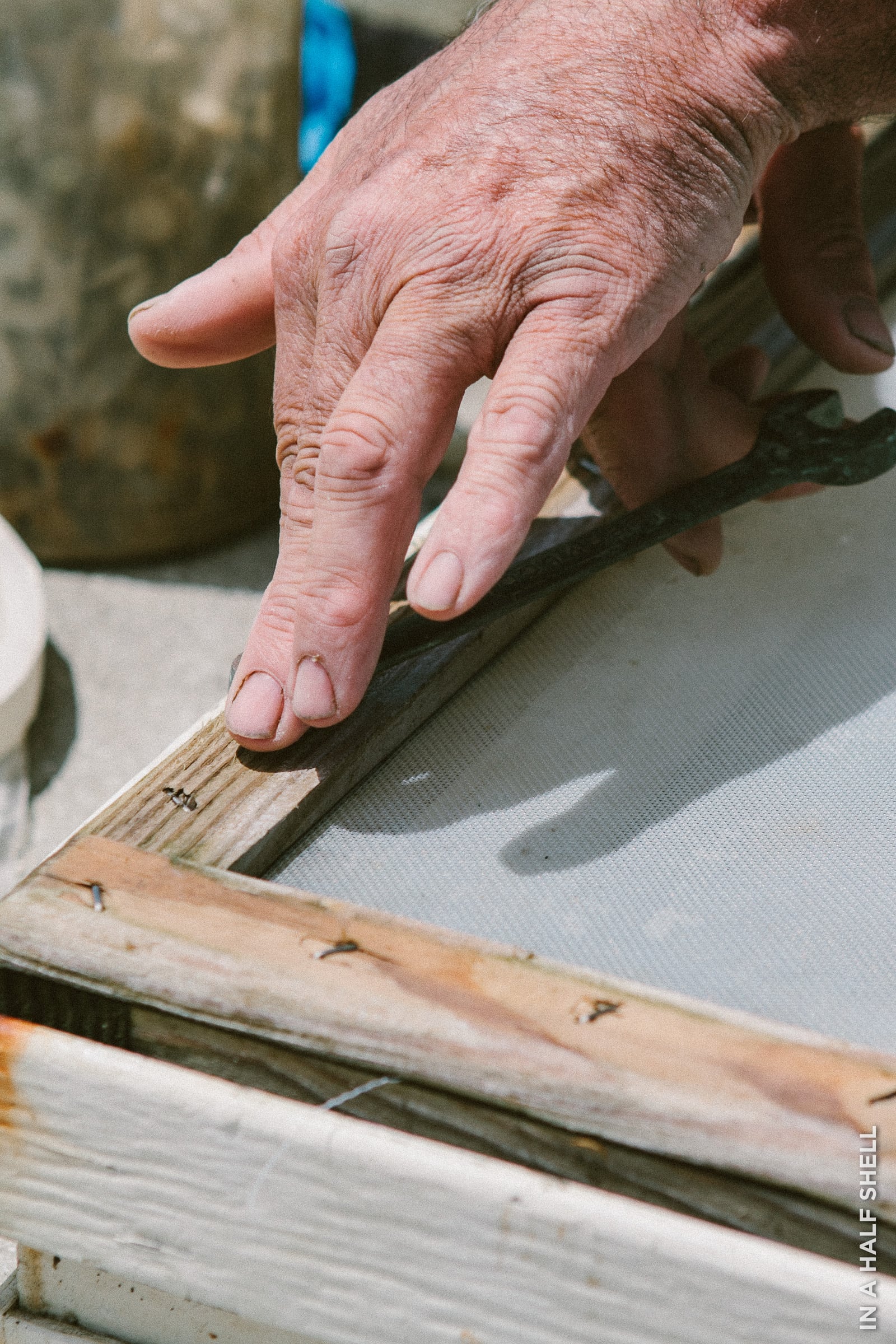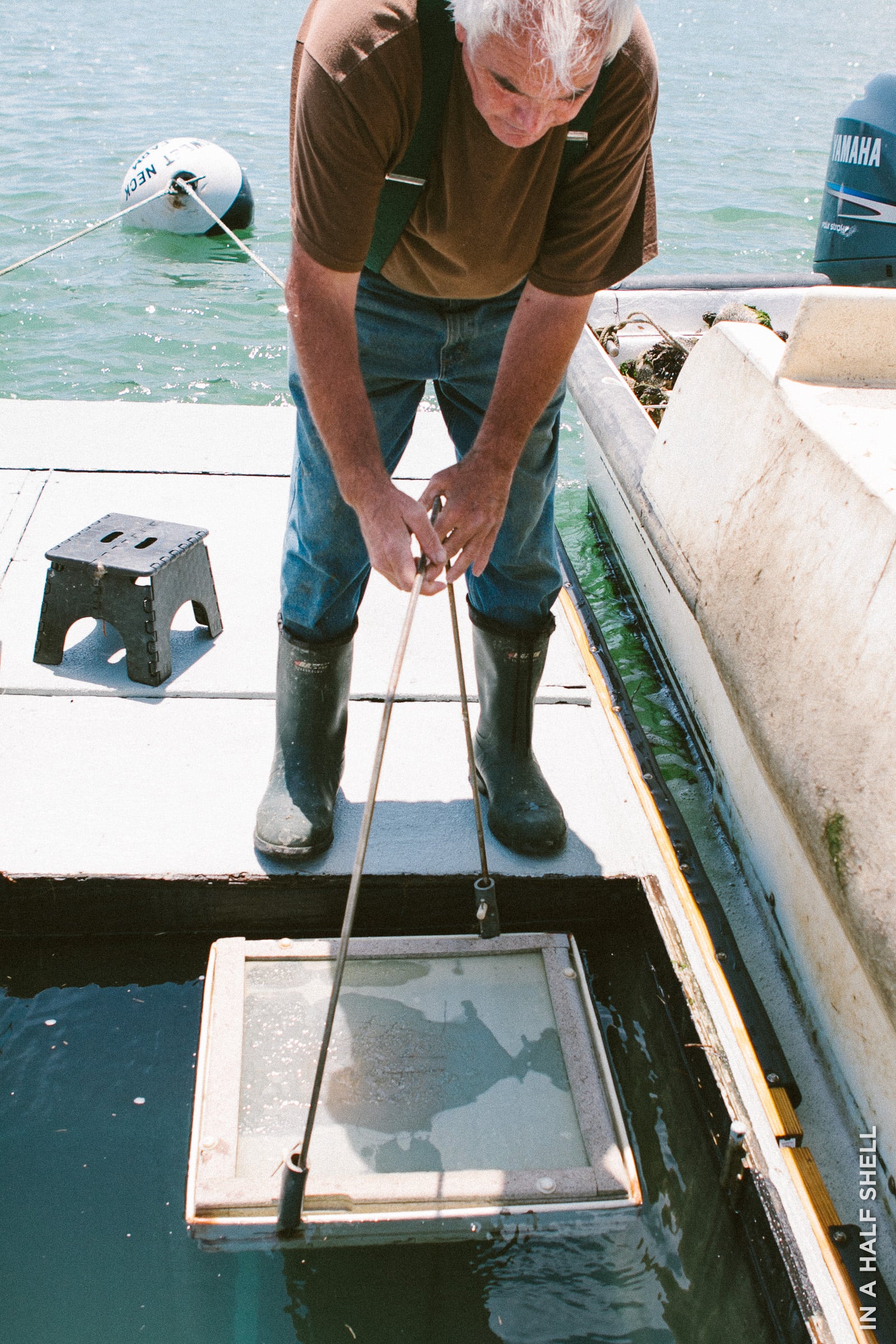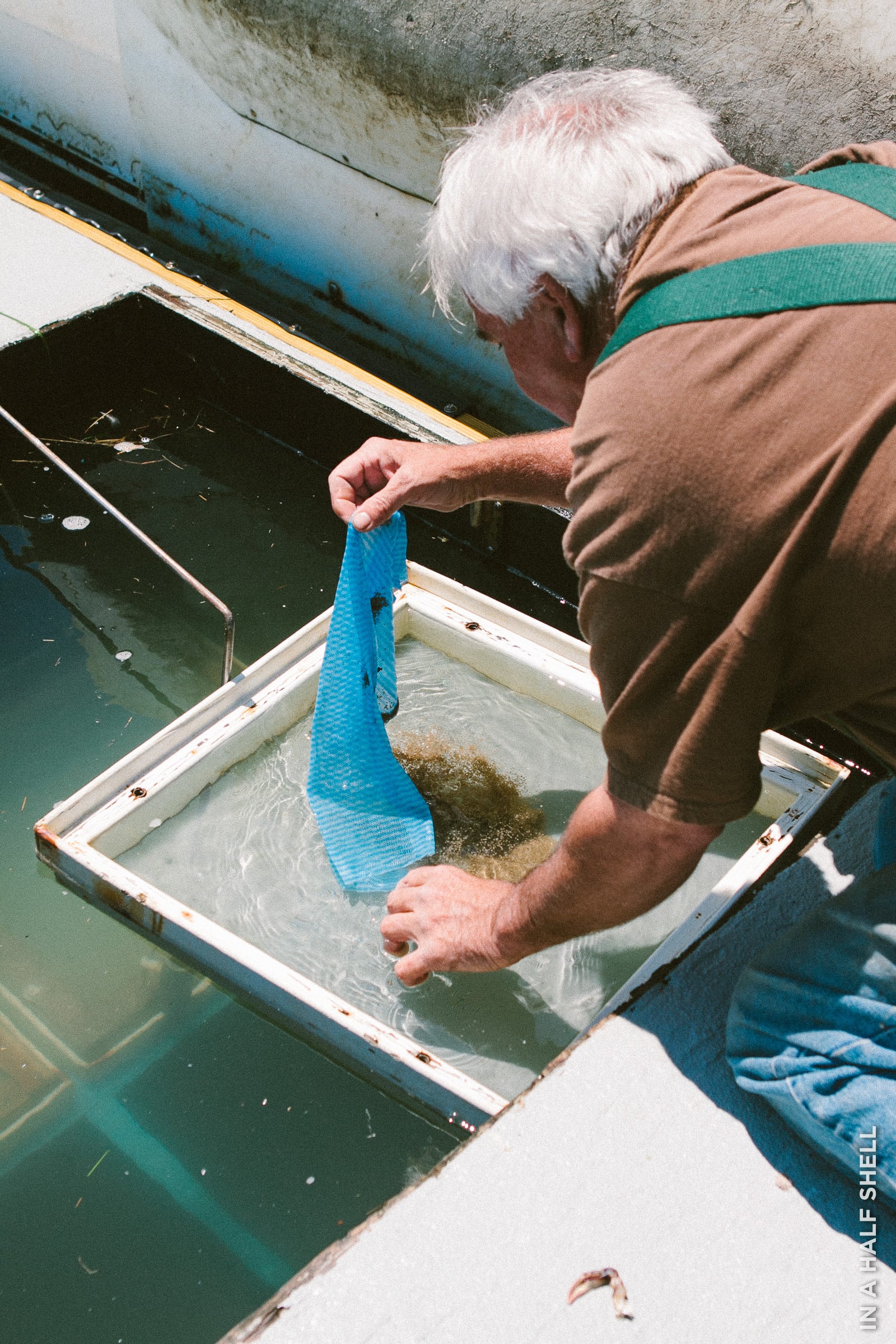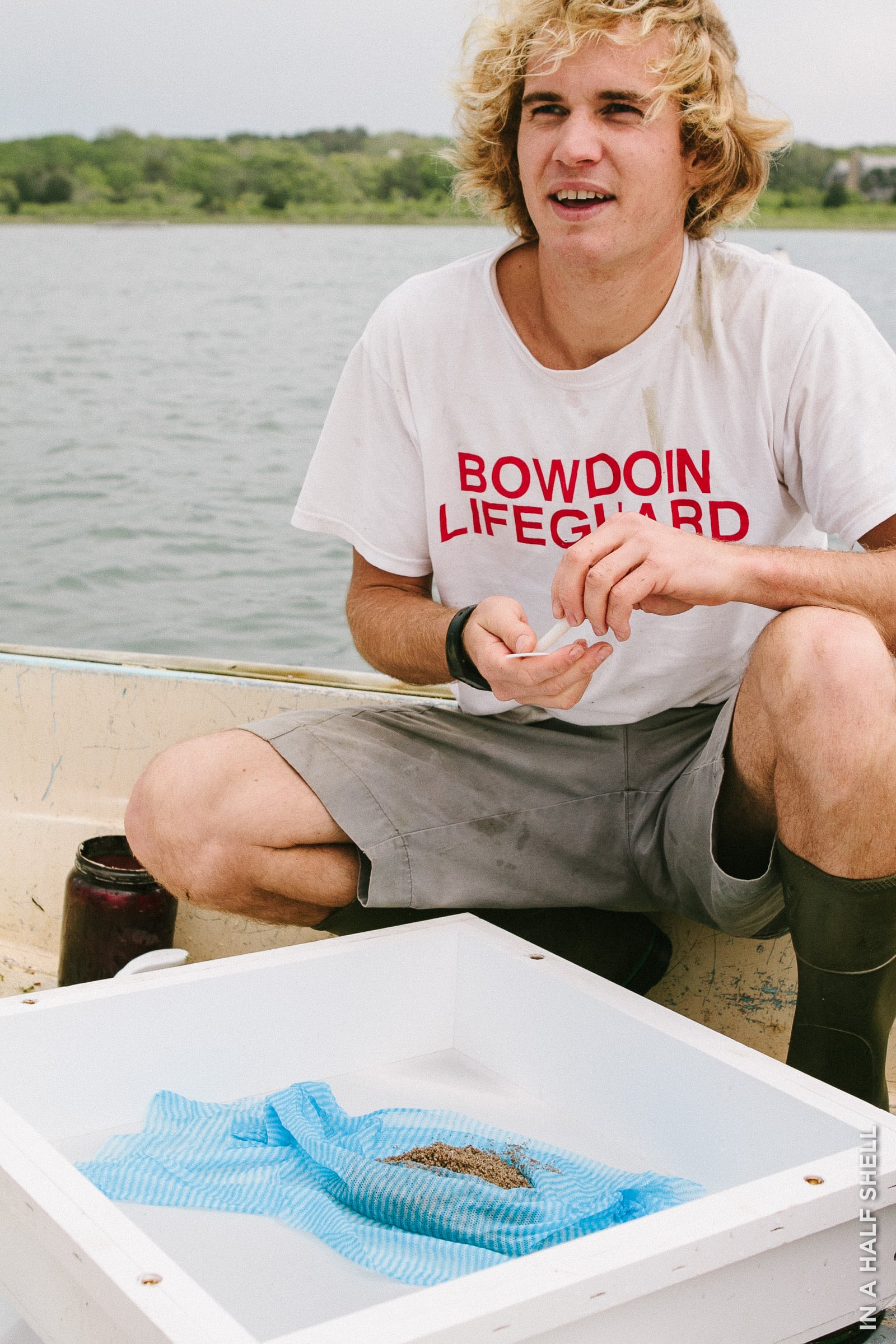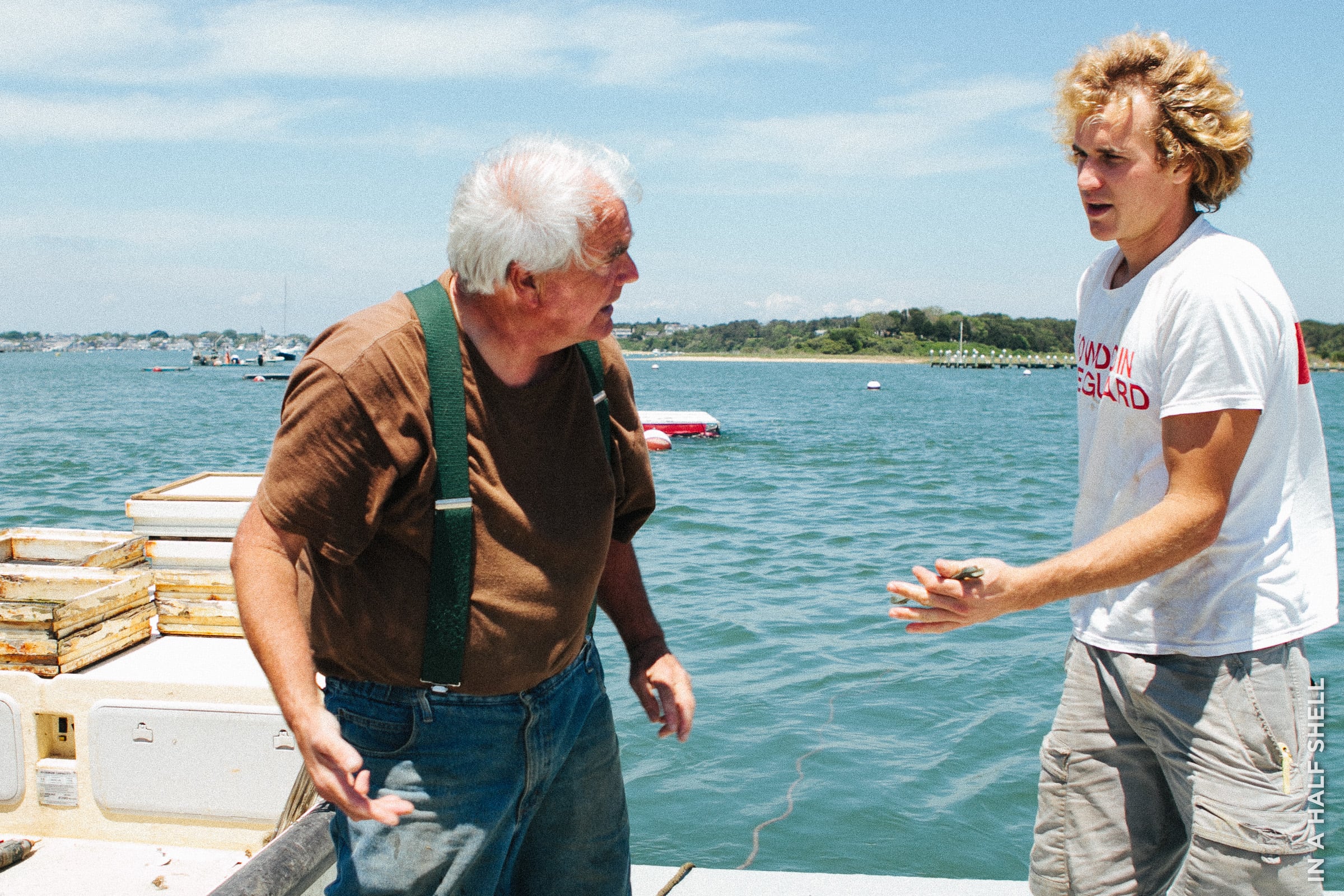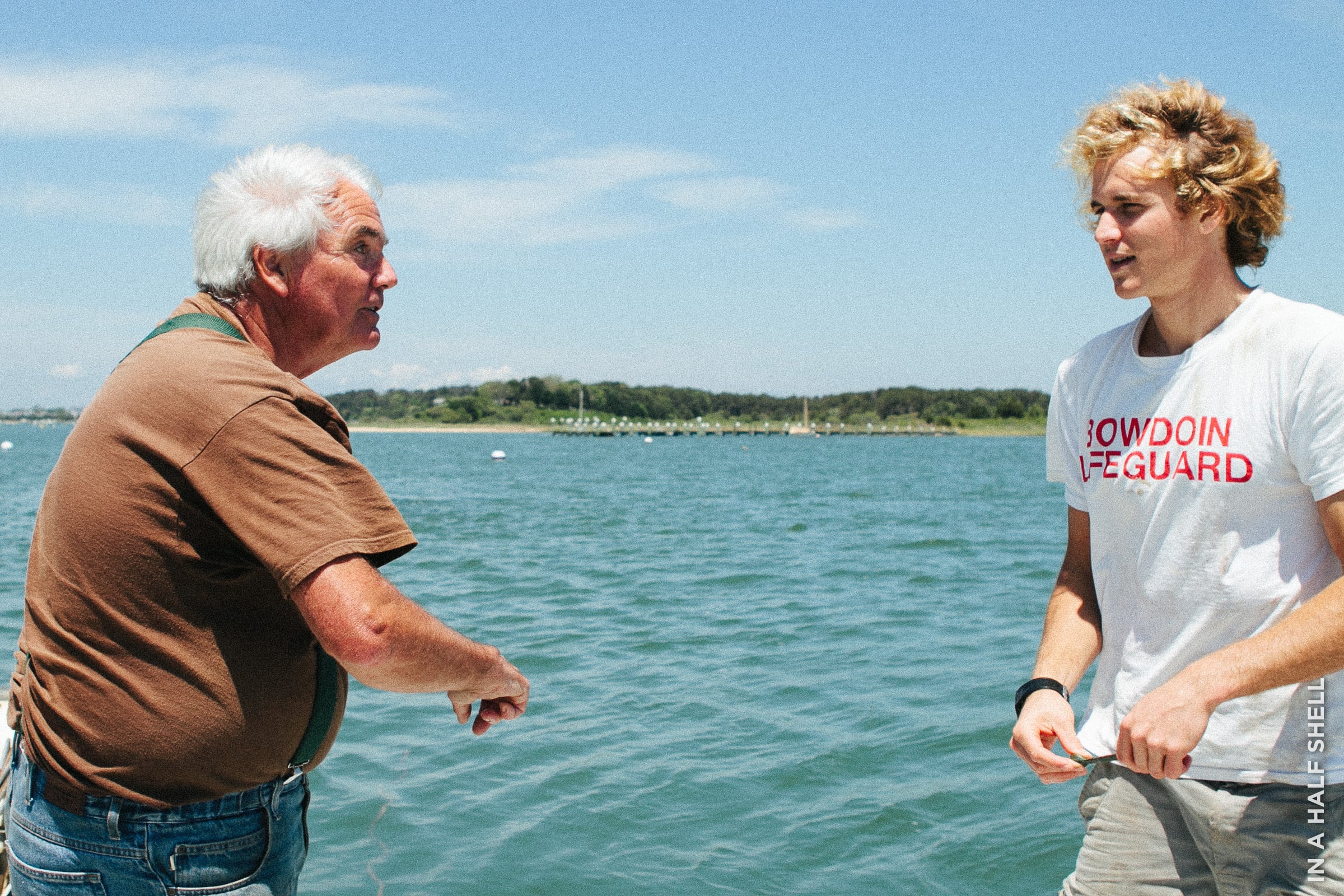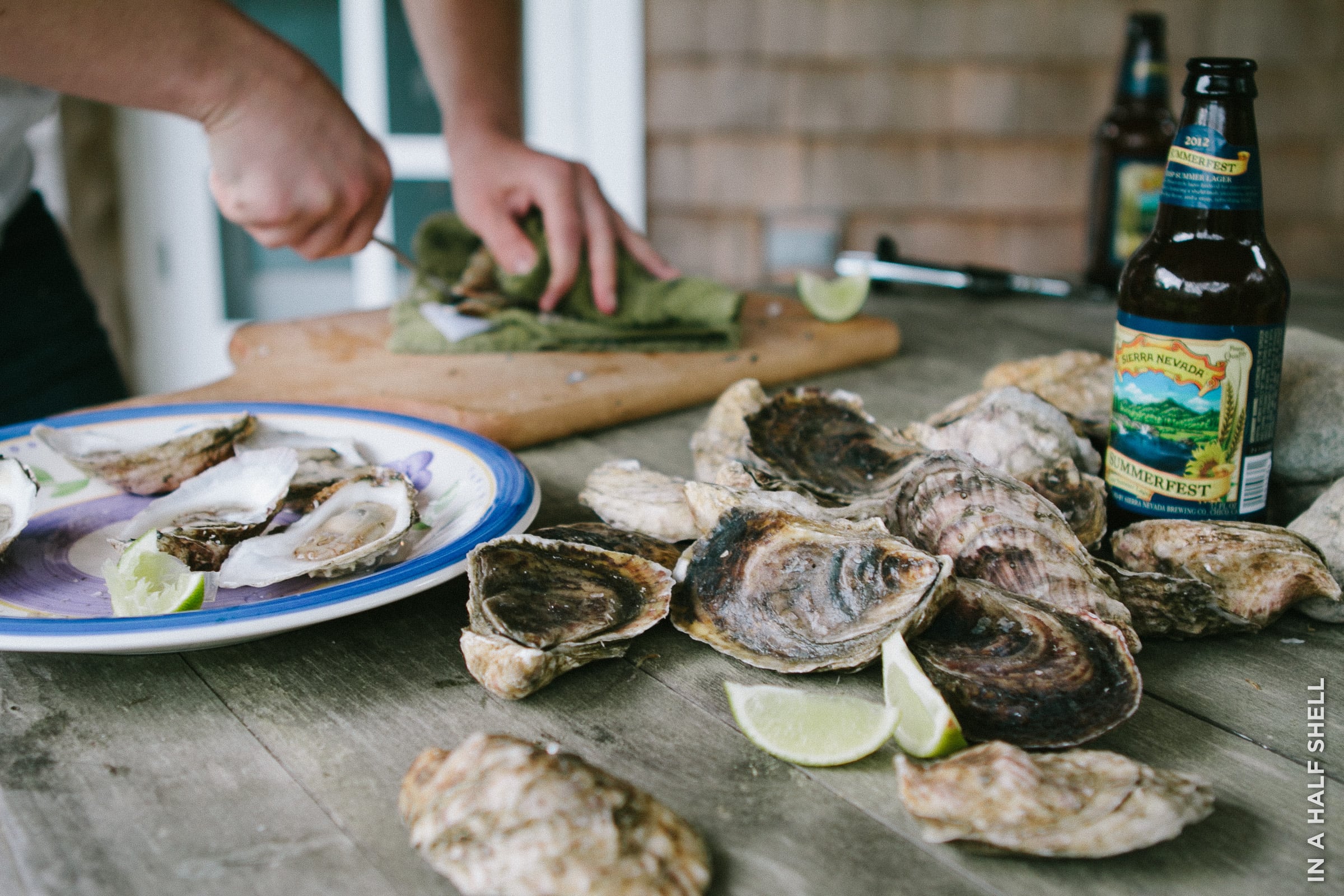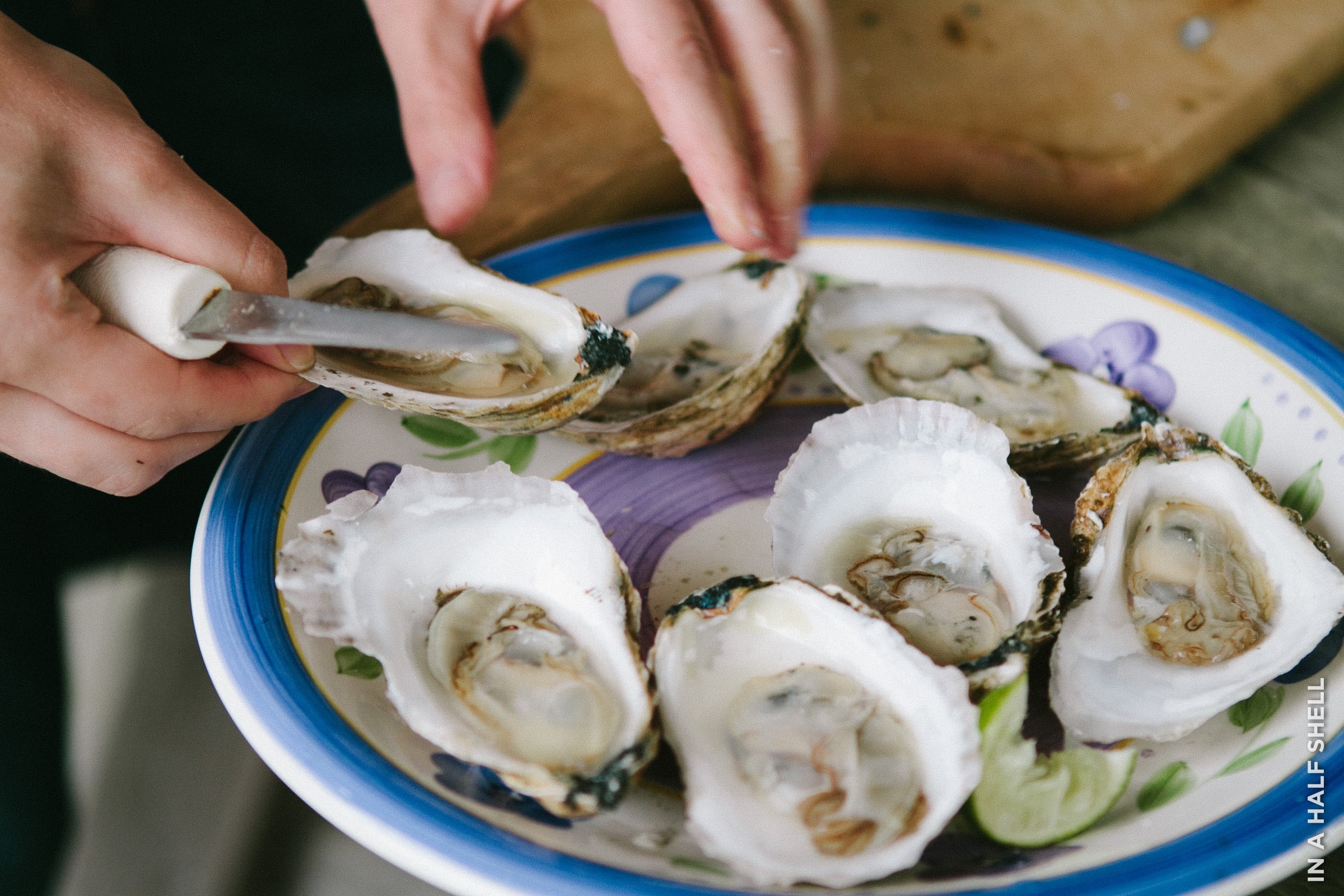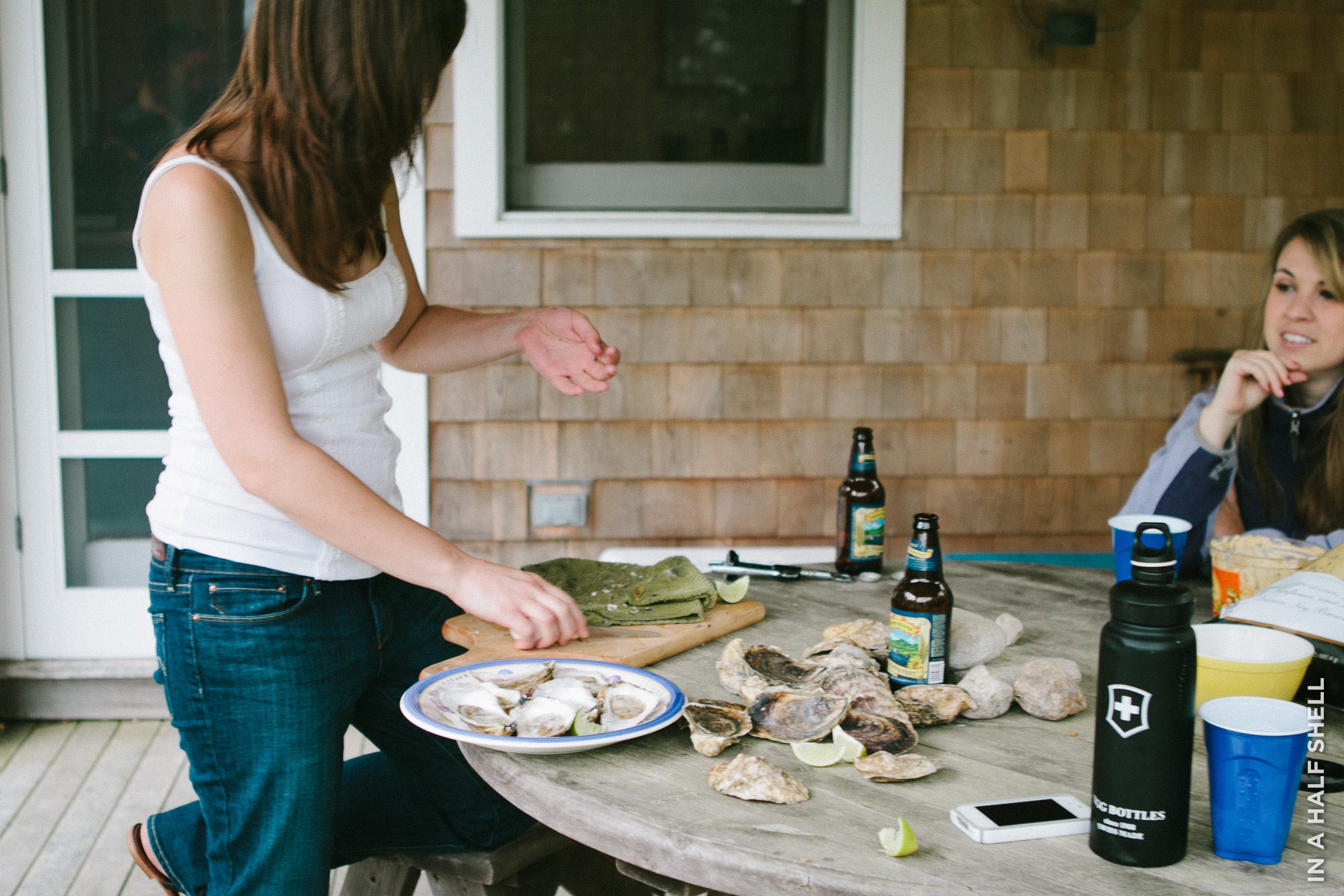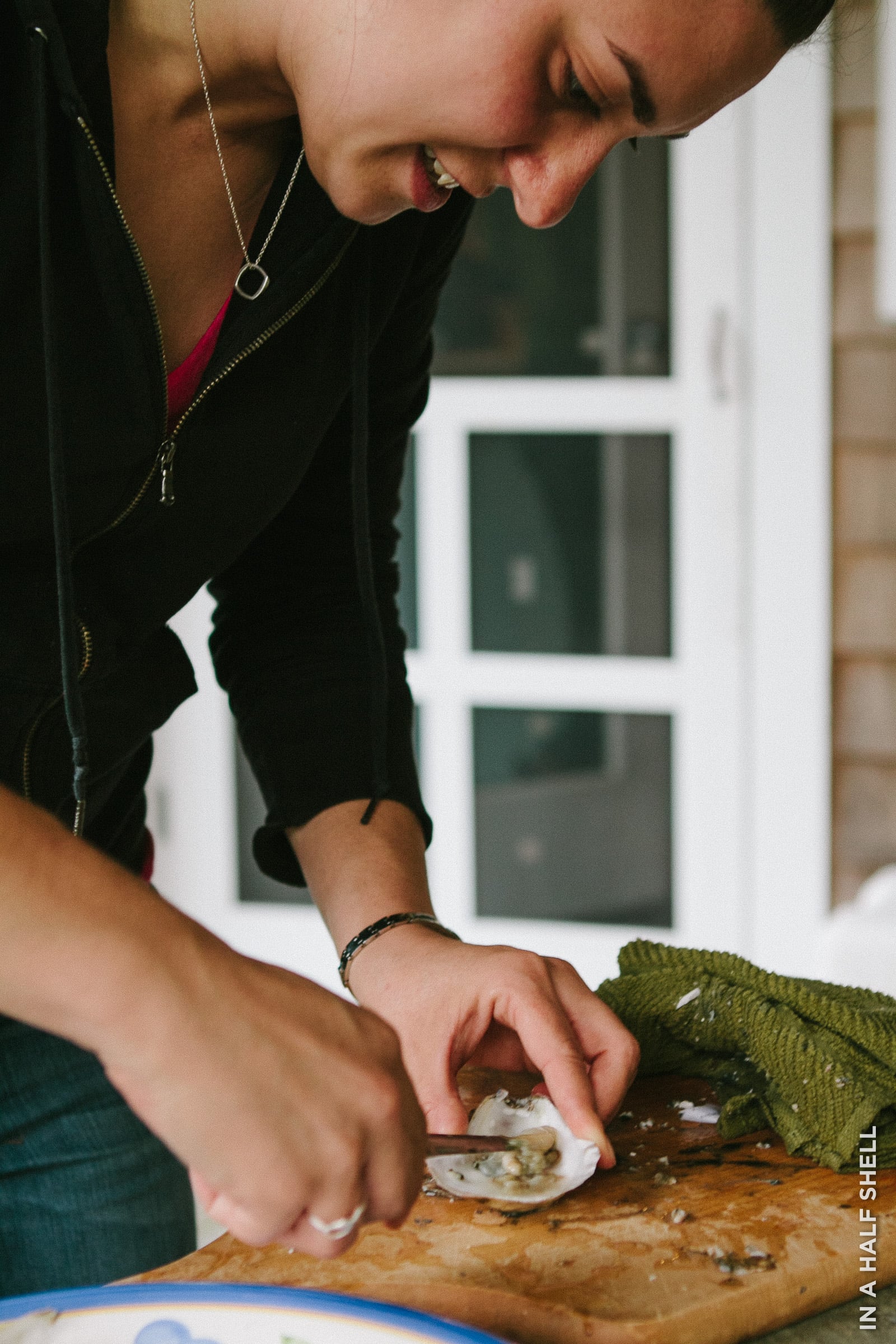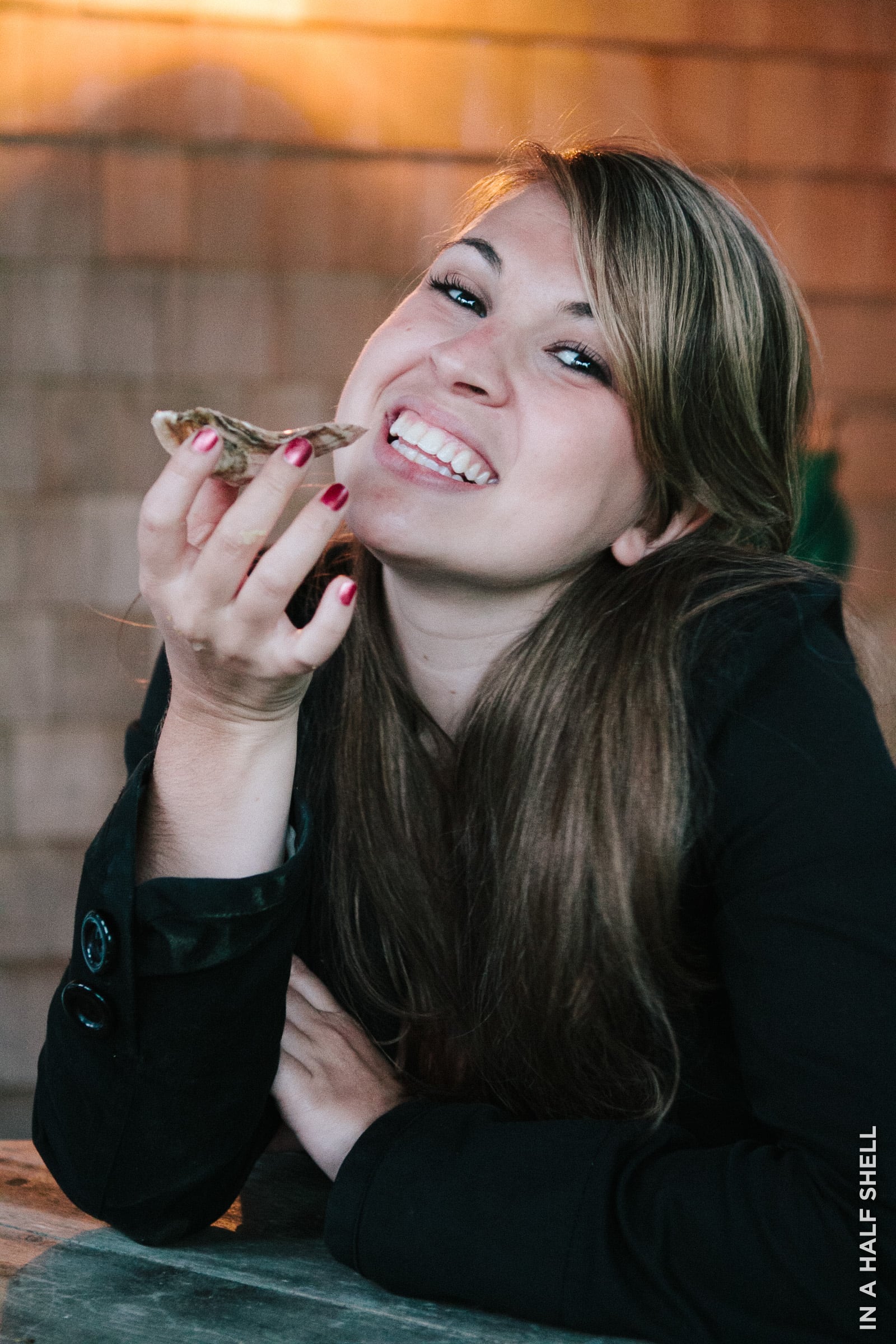A Trip to Sweet Neck Farm on Martha’s Vineyard
For an oyster farmer, no other day is as pivotal as seed planting day.
For Jack and Sue Blake of Sweet Neck Farm in Martha’s Vineyard, they greet the occasion with the same enthusiasm as they would have for Christmas morning. But instead of opening a stockpile of gifts, there’s just one—containing several hundred thousand baby oysters. My friend A and I were lucky enough to tag along and witness a moment in the oyster biz that few ever get to see.
First of all, just what were we really doing in the middle Martha's Vineyard? Well, the original purpose of our Cape Cod road trip was to attend a friend's bachelorette party. Of course, being the oyster-obsessed blogger/photographer that I am, I just had to turn it into story. Here's why: since the beginning of my oyster adventure, I had a special place in my heart for Martha's Vineyard varieties. They were consistently robust in flavor and texture, and I often wonder about the people behind these amazing products.
With the help of a crazy chain of people (many thanks to Kevin Joseph, Chris Sherman from Island Creek Oysters, and Rick from Martha's Vineyard Shellfish Group), I was able to arrange an outing with Jack and Sue Blake aboard their Sweet Neck Farm oyster boat.
Sweet Neck Farm is one of the 12 oyster farms in Katama Bay. (FYI: Katama is pronounced Kuh-TAY-Ma.) To get there, A and I took the 30-minute Martha's Island ferry from Wood's Hole, MA to Oaks Bluff and then hopped aboard a local bus to Edgartown. The bus system on the island is fantastic, by the way. There is really no need for a car unless if you plan to haul around a lot of gear with you. You can even stack bikes on the front of the bus if you get tired of riding around.
Entering the soup
Sue picked us up from the Edgartown marina at half past 10, where local townsmen were already gutting their morning catches on the boat dock. Jack and their oyster dog Marley were patiently waiting aboard their oyster boat. The 23-foot skiff was well-worn and stacked with hand-built mesh trays (ready to be used later). As I looked around, I quickly realized that I probably should have worn something other than white shorts, but the excitement of the impending day mitigated my impulse to fret about fashion.
Jack started the engine and we began to glide slowly out of the harbor. The further we were from the marina, the faster we went. A and I fawned left and right at the gorgeous summer houses along both sides of the Katama Bay. After passing the narrowest part of the bay, the weather grew funky. "We're now entering the soup," Sue said. A thicket of fog blanketed the water and transformed the once-pleasant environment into the perfect setting for an eerie thriller movie.
The opaque clouds blinded A and me, but they didn’t phase Jack and Sue at all. Being accustomed to these conditions, they simply relied on sound as their predominant sense. So there was a lot of, "it sounds like...," versus "it looks like..." observations going on. On several occasions, Marley would tiptoe to the edge of the skiff to sniff into the distance. Perhaps being the only one who could really get a full sense of what was happening, it was best to get an open view.
The seed delivery
Most of the oyster farming community on Katama Bay, including the Blakes, purchase their seed from the same certified hatchery on Muscongus Bay in Maine. About 2 million seeds are planted in the bay each year. Each farmer orders their own quantity, which ranges from several thousand to several hundreds of thousands, and everyone's orders arrive together. Normally, things go as planned. But after encountering a shipping snafu earlier, the farmers were on edge today.
When the box for Sweet Neck had finally arrived, shoulders loosened a bit.
Sue gingerly sliced open the box, revealing a white Styrofoam cooler. Inside the cooler were layers of cooling packs and bags containing bundles of seed. The baggies were carefully handed to each party, but one team was left high and dry. Their order was missing. Suddenly the smiles turned serious. They started to make calls. Fortunately, it was just an issue of mislabeling. All was well.
The most ambiguous and anxious part of the day was over.
Floating ingenuity
There are two floating platforms on Katama Bay which Sweet Neck Farm carries out its operations. A and I first explored the larger dock out in "the soup." It is where the market-sized oysters are cleaned (power washed), tumbled, and dried.
For those who aren't familiar with these procedures, tumbling oysters essentially means rotating a batch of them in a giant mesh cylinder for a few minutes. It helps keep the shells manicured and the strengthen the muscle. I guess you could call it oyster boot camp / spa day. As for drying, apparently that is to help get rid of pesky tagalongs, such as mussels and barnacles.
This facility and the floating nursery are works of human ingenuity. Jack Blake designed and developed most of the equipment that he and the rest of the farmers in the bay uses. The oyster tumbler, which has 7200 individual handmade welds, is powered by the wind energy. Other than the occasional tumble, oysters don't really move around. They are placed in trays or cages that sink beneath the water's surface, held afloat by a labeled buoy. The incoming and outgoing tides help bring fresh nutrients to them.
Upweller upgrade
While the larger platform was fun, it was no place to handle the babies. So we parted aways with Sue and Marley, and set out for the floating nursery with Jack.
As we returned back to the bottleneck of the bay, the fog lifted from us as rapidly as it had descended. Other farmers were already hard at work planting their seeds into the water. Some worked in teams, and others alone.
It's amazing that every single floating nursery out there utilized Jack's design. These aren't the FLUPSY's that many oyster farms in the US rely on. These tidal-powered upwellers were specially optimized by Jack to work in Martha's Vineyard's conditions. Fourteen years ago, Jack redesigned an existing upweller system (a.k.a. Mook upweller) that helped both increase flow and capacity.
Planting the seed
The moment of truth was upon us. It was time to transfer the seeds into the water. Jack took care to shield the baby oysters from the wind. One swift gust could easily blow a few hundred away! He slowly unwrapped the blue burrito to expose a pile of brown dirt. To the naked eye, the heap of baby oysters looked more like a grains of sand than shellfish. But as you can see below, each are actually very tiny versions of their adult selves.
The bundle above contains about 400,000 seeds. To spread out the risk, Jack has his seeds divided into four clusters, one for each tray. For the next several weeks, they will grow to a bigger size in the safety of these mesh trays. While transferring each batch of baby oysters to their new homes, Jack checks for holes and leaks up and around the wooden frame. One tiny tear in the mesh would result in an empty tray the next day. In other words, 100k oysters GONE. (eep!)
Fellow farmer Nick Turner was about to encounter a catastrophe.
As I watched him go through the same motions as Jack, neither of us suspected anything wrong. Little did I know, he had overlooked a crucial element. His mesh trays, which were all bright white and seemingly new, were missing gaskets. The gasket is a vital piece of material placed between the wood frames that seals everything in. Without the gasket, the oyster seed would simply slip through the slim cracks, resulting in a devastating loss.
Fortunately, Jack caught the faux pas before disaster could strike. There was some extra sealant tape onboard Jack's boat that did the trick. The death-defying relief that overcame Nick's face said it all. Crisis averted and much gratuity was given.
Pictured in the gallery Jack gently lowering one tray of 100k oysters into the upweller. In just 10 days, these itty bitty oysters will triple in size!
A sweet parting gift
After the last mesh tray was put into the upweller, Jack gave his new oyster babies one last look and closed the lid. They will be revisited by the Blakes regularly, to ensure that they're kept clean, happy, and healthy. Meanwhile, A and I were returned back to Edgartown.
As a parting gift, we were bestowed with several dozen fresh Sweet Neck Farm oysters. See, I told you it was like Christmas!!! We carried them in the same Styrofoam cooler that the baby oysters had arrived in. Full circle.
I was especially excited about this, because it would make for a brilliant bachelorette surprise... never mind that the bride-to-be wasn't much of an oyster eater.
BTW: I couldn’t resist but share this photo of one of the most ridiculous houses in Edgartown. Apparently it belongs to the family of a successful car dealership owner. Instead of showing off cars on their property, they keep llamas. Go figure.
Lunch at Atlantic Fish & Chop House
By the time we were back on dry land, our stomachs were grumbling hard. Jack recommended having lunch at Atlantic Fish & Chop House. After we said our goodbyes, we hauled our little cooler to the restaurant and sat down in the covered back porch area. We tried their crab cake (amazing), lobster cuban (pretty phenomenal), Katama Bay oysters (sublimely sweet and plump), and clams (also yum). One of the oysters on our plate had the most exquisite vein detailing. The whole animal looked like a heart from the sea!
Fast forward a few hours. We left Martha's Vineyard and drove up to Pocasset, where the party was happening. As soon as we brought in the oysters, there was immediate intrigue and excitement. K was probably not one of the most eager, but she agreed to try one. That night, just under half of the oysters were consumed. The firm, briny meats went down perfectly with a crisp, summer ale. More booze was consumed. Bachelorette shenanigans ensued.
The “next day” oysters are surprisingly better
The next day, some of the girls tried their hand at shucking. A inevitably cuts herself.
After trying the Sweet Necks on the first night and then the second, I have to admit that I actually enjoyed them better on the second night. My statement feels a bit counterintuitive, since usually we assume the fresher the oyster, the better. Apparently this isn't the case when the sea water is extremely briny. While the meat was supple and rich, the sea water overpowered the flavor on the first night. On the second, it tasted much more mellow. It really allowed the wonderful nuances in flavor of seaweed and miso to shine through.
This entire experience has made me appreciate oysters on yet another level. It's not just about the terroir or taste of a place. Well, it is, but it's not all of it. It's also very much a story about the people behind the product. 98% of the oysters we eat today are sustainably farmed, and it ain't easy! Folks like the Blakes are rare gems. They put their heart into their work and have no hesitation to help those around them succeed as well. It's that kind of generosity and integrity behind their oysters that makes it all the more precious to eat.
So thank you again Sue and Jack for letting us experience a little part of your lives. I look forward to seeing Sweet Necks on the menus of NYC oyster bars soon!
Check out this sweet article about Sweet Neck Farm in the Vineyard Gazette.


